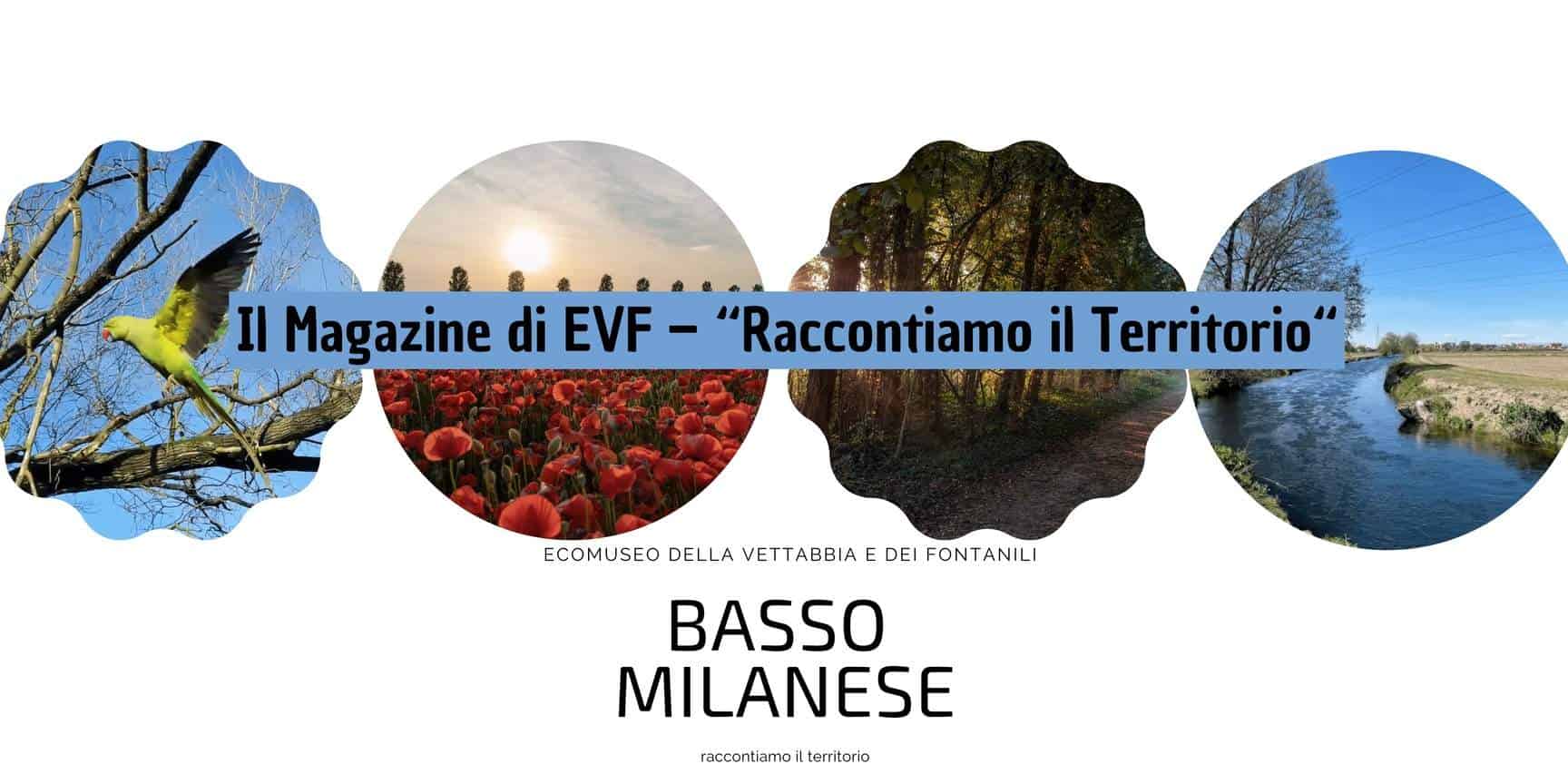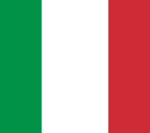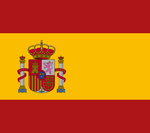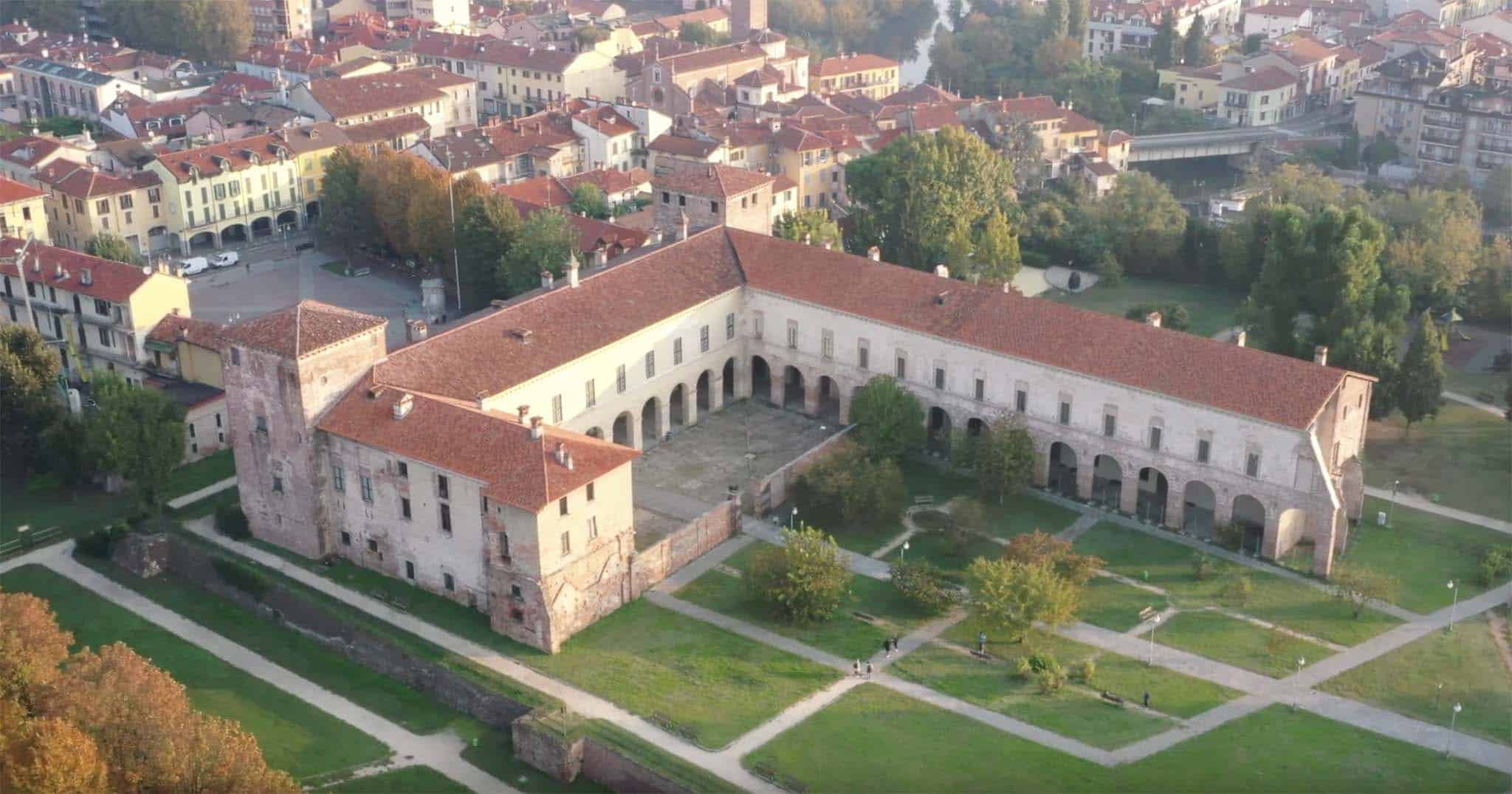Home » Itinerari » Paesaggi » Luoghi di Interesse » Medici Castle of Melegnano
Medici Castle of Melegnano
The Medici Castle of Melegnano, located in the homonym Lombard town, is the architectural result of a series of stratifications, due to the succession of different ruling dynasties, from 13th to 17th century.
The first receptum, on which the current castle rises, was built starting from 1243 at the behest of Cattellano Carbone, mayor of Milan. The castle was edified on a preceding fortification, located in the same place and destroyed in 1239, also to face the repeated attacks of emperor Frederick II, nephew of Frederick Barbarossa. In 1279, the Guelphs and the Ghibellines of Milan signed here a treaty of peace.
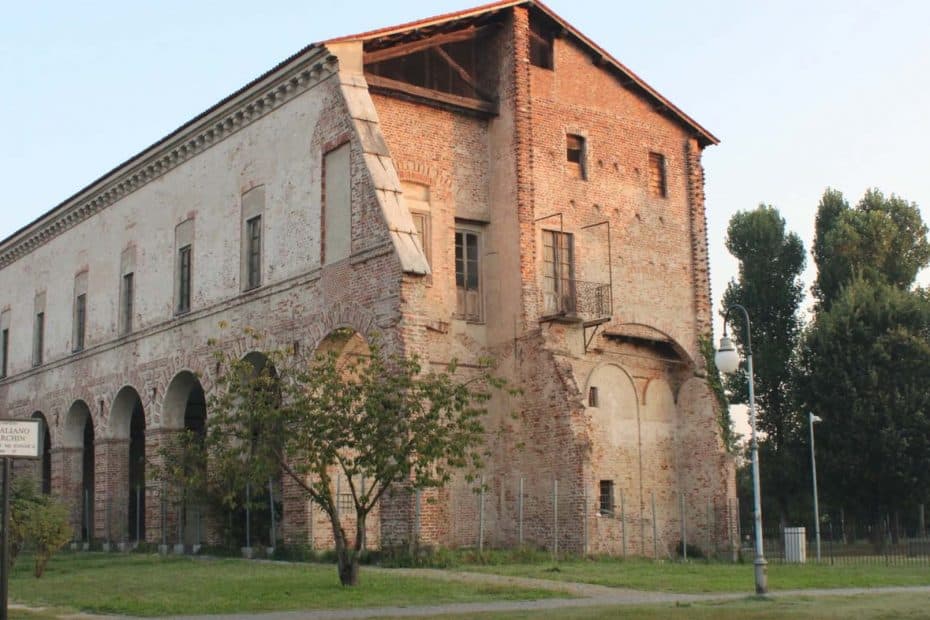 The structure was then significantly expanded by the Visconti, thus assuming the classical quadrilateral shape, with square angular towers. In 1512 the castle was given to the Marquises Brivio, who in 1532 sold it, with the whole feud of Melegnano and the approval of emperor Charles V, the new Duke of Milan, to Gian Giacomo Medici. The Medici kept the ownership of the building until 1981, when their last heirs, sold it to the Province of Milan which, two years later, by means of a barter, decided to leave some room for the use of the exterior of the castle, then moving to the internal rooms, which host frescos dating back to the first half of the 16th century. In 2001, when the place was reopened to visitors, also the “Civic Collection don Cesare Amelli”, a local parson and historian, was inaugurated.
The structure was then significantly expanded by the Visconti, thus assuming the classical quadrilateral shape, with square angular towers. In 1512 the castle was given to the Marquises Brivio, who in 1532 sold it, with the whole feud of Melegnano and the approval of emperor Charles V, the new Duke of Milan, to Gian Giacomo Medici. The Medici kept the ownership of the building until 1981, when their last heirs, sold it to the Province of Milan which, two years later, by means of a barter, decided to leave some room for the use of the exterior of the castle, then moving to the internal rooms, which host frescos dating back to the first half of the 16th century. In 2001, when the place was reopened to visitors, also the “Civic Collection don Cesare Amelli”, a local parson and historian, was inaugurated.
The castle of Melegnano has an atypical U-shaped plant, as the part on the back was demolished at the behest of Duke Francis Sforza in 1449, during an attack to the castle.
It is completely made of bricks, with the main front towards the current piazza della Vittoria, the unique “original” part, with the exception of the windows, now rectangular-shaped, which were modified from the original pointed arches. At the end of the walls, just under the present roof, the battlements in Guelph style are still visible.
At the corners of the structure, you can see still nowadays two of the four original towers, the sides of which are 10 meters long. The sides of the castle are instead 75 meters long. Inside, the court shows a round arched portico with ashlar: here, once there were some houses, together with stables and deposits for the hay.
The moat too, known as “Fossa Medici”, still partially visible nowadays and which meets the river Lambro, constitutes an important testimony of the Age of the Medici.
Once you cross the central terracotta door, you reach the grand staircase, which leads to the highest levels: it is composed of some blocks of bricks arranged in a herringbone pattern, separated each other by stone cords, so that it is possible to climb it also on a horse.
Pictorial Cycles
The Castle of Melegnano hosts a series of pictorial cycles dating back to the 16th century, for the most by unknown authors, aiming at celebrating the Medici of Marignano. The decorations, which completely cover the rooms at the first level of the castle, are important testimony of the pictorial style named Lombard Mannerism. All the paintings are frescoed, with some dry finishes. Unfortunately, due to humidity and neglect, some of these works, particularly those which are exposed on the walls towards the outside of the building and generally in the lower part of the rooms, have been deeply damaged.
Many among these frescos have a mythological and heroical theme, or they refer to the contemporary of the 16th century.
The atrium of the castle is painted with a variety of floral motives, whereas on the staircase the myth of Phaeton driving the cart of the sun, together with the coat of arms of Gian Giacomo Medici, are frescoed on the vault. On the walls, framed by a false balustrade, a variety of landscapes find their place.
In this area there is also the figure of Mars, considered as the mythological founder of Florence, accompanied by the coat of arms of the Medici. At his side, there is the coat of arms of the Borromeo family and that of the Medici of Marignano. On the opposite wall, there is the representation of the myth of Ganymede, kidnapped by Jove’s eagle, because of his beauty. At the sides, the fresco shows two noble crests, one of Augusto Medici, brother of Gian Giacomo, and the other of the Von Ems zu Hohenems family, Wolfgang Theodoric of which had married Giangiacomo Medici’s sister Clara.
Above the frescos, there is the figure of a brig that had belonged to Gian Giacomo, flanked by the motto “Salva nos vigilantes” (Rescue us vigilantes’). Opposite to this, there is a fresco with the motto “Non frangitur pondere virtus” (Weight does not break virtue).
Worth noticing are then the Fireplace Room, a monumental fireplace of the 16th century made of stone, and the Emperor Hall, also provided with a monumental fireplace, and completely dedicated by the Medici to the emperors of the Holy Roman Empire, particularly to Charles V.
In the Emperor Hall are painted many different allegorical figures, representing Music (a woman playing harp), and another figure difficult to read, due to the huge damages that it has undergone in the course of the centuries, the Fortress (a woman near a column) and the view of the city of Worms. Then there are the allegories of Faith (a woman bearing a cross, a monstrance, a white robe and with a book at her feet) and of Justice ( a woman bearing a sword and a libra). Next to it, there is the representation of the city of Koeln, where you can neatly identify the shape of its cathedral which, started in 1248, was still incomplete in the half of the 16th century (it will be finished only in the 19th century). Then there are the allegories of Temperance (a woman pouring some water from a container to another), and of Peace (a woman bearing a cornucopia). The following representation is that of the city of Erfurt, followed by the virtue of Hope (a woman meditating in front of a vase) and then the view of the city of Fulda. Then there is the allegory of Grammar (a woman holding two children by the hand) flanked by the city of Frankfurt on the Oder. Finally, the allegory of Hunting (represented by the figure of Diane the hunter with bow and arrows).
The Seasons Hall, has some frescos depicting various Greek and Roman tutelary deities of the different seasons, while the Battle Hall is characterized by the presence, in the frescoed upper band, of nine battle scenes directed by Gian Giacomo Medici, in the places where he actedb as a leader (for the most, the Como Lake), before becoming Marquis (before 1532).
The Hall of Hercules, which served as a corridor leading to the other rooms at the upper level, is marked by 18 frescos representing some episodes of the life of Hercules, a symbol of vigour and physical robustness, as well as generosity and altruism.
The Hall of the Argonauts, near the Hall of Hercules, was the private study of the Marquis of Melegnano, where he met his most intimate friends. On the walls, the frescos describing the myths of Jason and the Argonauts.
The successive Hall of the Coats of Arms, after the Hall of the Argonauts, is distinguished in its upper part of the four walls by sixteen paintings portraying the coats of arms of some important noble families, related or allied to the Medici of Melegnano. The hall was adapted during the centuries as a private chapel of the family.
In the Hall of Aeneas, the figure of the Greek hero in Italy who, after the destruction of Troy, departed with some ships in search of fortune, landing in Lazio and giving birth to the Roman civilization, according to the myth, is revived. The frescos are framed in false frescoed architectural works and figures of cherubs.
In the end, the Hall of Pio IV, frescoed with the portrait of the Pope, presents also a variety of frescos inspired by Ovid’s Metamorphoses. The classical representations are separated from each other by a number of allegories, representing some arts like Rhetoric, Astronomy, Arithmetic and Dialectic. Under the Grammar, there is the inscription ACITAMARG, that is, the name of the depicted art, written backwards.
Traduzione : Piera Scudeletti – EVF
